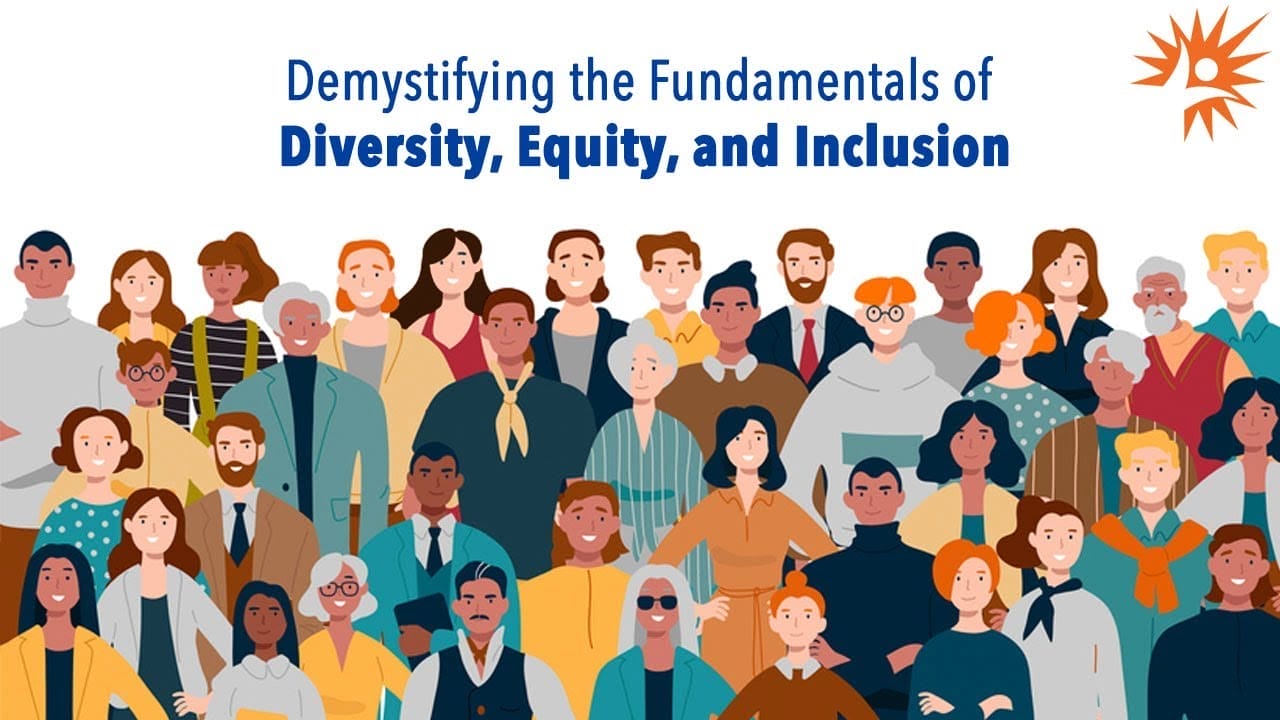Did you know that access to free diversity training programs has the potential to transform workplaces and communities? NonprofitReady, a leading online learning platform, offers over 500 free courses for nonprofit professionals, including a range of popular free courses on Diversity, Equity, and Inclusion (DEI). These courses provide valuable insights and practical strategies for cultivating diverse, equitable, and inclusive spaces in organizations and communities.
Key Takeaways:
- NonprofitReady offers over 500 free courses, including popular ones on DEI.
- Diversity training programs provide valuable insights into cultivating inclusive spaces.
- Accessing free diversity training programs can transform workplaces and communities.
Top Free Diversity Training Programs
When it comes to free diversity training programs, there are several excellent options available online. These programs offer valuable insights and resources for individuals and organizations looking to cultivate inclusive environments.
One notable program is Karamo’s Diversity, Equity, and Inclusion Training on EdApp. Developed by culture expert Karamo Brown, this course covers essential topics such as diversity, unconscious bias, inclusion, and creating a safe space.
Another noteworthy course on EdApp is Diversity and Inclusion. This program focuses on embracing differences in the workplace and eliminating unconscious biases, creating a more inclusive atmosphere for all employees.
If you’re looking for comprehensive training that extends beyond diversity and inclusion, Healthcare Data Security, Privacy, and Compliance offered by Universal Class is an excellent choice. This program covers not only diversity but also communication in a diverse workplace and implementing diversity initiatives.
For individuals seeking to improve their communication skills in diverse environments, the Communicating with Diverse Audiences course hosted by the University of Surrey on FutureLearn is highly recommended. This program provides practical strategies for effective communication and collaboration.
These are just a few examples of the diverse range of free diversity training programs available online. Whether you’re an individual looking to enhance your understanding of diversity and inclusion or an organization striving to create a more inclusive work environment, these programs offer valuable resources and insights.
Building Diversity and Inclusion Skills

The key to fostering a diverse and inclusive workplace lies in equipping employees with the necessary skills and knowledge. Online diversity training programs offer valuable resources to help individuals embrace differences and create a culture of inclusivity. Two notable courses in this field are the Diversity and Inclusion course on EdApp and Foundations of Diversity and Inclusion at Work on Coursera, offered by the University of Virginia.
EdApp’s Diversity and Inclusion Course
The Diversity and Inclusion course on EdApp is specifically designed to guide employees towards embracing diversity and fostering inclusivity in the workplace. This course covers a range of essential topics, including:
- Understanding the importance of diversity
- Recognizing and eliminating unconscious biases
- Strategies for cultivating an inclusive culture
By completing this course, employees gain the skills necessary to create a work environment that celebrates diversity and ensures everyone feels included and valued.
Foundations of Diversity and Inclusion at Work
The Foundations of Diversity and Inclusion at Work course, offered on Coursera by the University of Virginia, provides a comprehensive education on diversity, equity, and inclusion issues in organizations. This course equips participants with strategies to address these challenges and build a more inclusive workplace. Key topics covered in this course include:
- Understanding the impact of diversity and inclusion
- Building awareness of biases and stereotypes
- Implementing strategies to foster inclusivity
Completing this course empowers employees to create an environment that respects and values individual differences, promoting diversity and inclusion within their organizations.
Recognizing and Overcoming Bias
Understanding unconscious bias is crucial for creating inclusive and equitable workplaces. The Intro to Unconscious Bias course on NonprofitReady delves into the concept of unconscious bias and its profound impact on decision-making processes. By exploring various biases that can influence our perceptions and actions, this course raises awareness and helps individuals recognize their biases. Armed with this knowledge, participants can make more inclusive choices in the workplace and contribute to a more diverse and equitable environment.
In addition to NonprofitReady, Karamo’s Diversity, Equity, and Inclusion Training on EdApp also addresses unconscious bias. This training provides practical examples and scenarios to illustrate the effects of unconscious bias, fostering a better understanding of its implications. By illuminating the role of bias in decision-making, this course empowers participants to challenge their assumptions and embrace inclusivity.
“Unconscious bias training is essential for promoting an inclusive culture by raising awareness about biases and their impact on decision-making. It helps individuals recognize their own biases, promoting a fair and unbiased work environment.” – Diversity and Inclusion Expert
Recognizing and overcoming biases is a foundational step in creating a workplace that values diversity and inclusion. By engaging in unconscious bias training, individuals can harness their newfound understanding to proactively challenge biases and create more equitable work environments. Through the power of education and self-reflection, organizations can pave the way for a truly inclusive future.
Personal Stories: Overcoming Bias in the Workplace
- A senior executive shares their experiences of confronting and overcoming unconscious biases in their team, highlighting the transformative impact on team dynamics
- A diverse group of employees narrate their journey of overcoming biases and fostering a culture of inclusion within their organization
Inclusion and Cultural Competence

Creating an inclusive workplace culture is essential for organizations to thrive and promote diversity. Inclusion in the workplace goes beyond simply having diverse employees; it involves cultivating an environment where everyone feels valued, respected, and able to contribute their unique perspectives and talents. One effective way to foster inclusion and cultural competence is through training programs that provide individuals with the skills and knowledge to create an inclusive work environment.
“Inclusion is not a matter of political correctness. It is the key to growth and success.” – Jesse Jackson
The Equity and Inclusion Lens course on NonprofitReady is designed to empower individuals to incorporate equity and inclusion into all aspects of their work and interactions. It teaches participants how to ask the right questions, challenge biases, and adopt an inclusive lens in decision-making. By equipping individuals with these skills, organizations can create a culture where diverse voices are heard, and all employees feel valued and included.
Diversity and Inclusion on EdApp is another valuable training program that focuses on cultivating an inclusive workplace culture. This course explores effective communication strategies with co-workers from different backgrounds and identities, and it emphasizes the importance of creating employee resource groups to foster a sense of belonging. By promoting cultural competence and understanding, this training enables individuals to navigate diverse environments and build stronger relationships within the workplace.
Promoting Inclusion and Cultural Competence in the Workplace
Training programs that promote inclusion and cultural competence in the workplace offer numerous benefits. They:
- Enhance communication: By providing employees with the tools and knowledge to communicate effectively in diverse environments, training programs improve collaboration and cooperation among team members.
- Encourage innovation: Inclusive workplaces foster a greater diversity of perspectives, which can lead to innovative ideas and solutions.
- Boost employee morale and retention: When individuals feel included and valued, they are more likely to be satisfied with their work and remain dedicated to the organization.
- Attract diverse talent: Organizations that prioritize inclusion and cultural competence are more attractive to individuals from diverse backgrounds, resulting in a broader range of talent and experiences.
Investing in inclusion and cultural competence training is a proactive step towards creating a more equitable work environment. By equipping employees with the necessary skills, organizations can foster an inclusive culture that values diversity and maximizes the potential of all team members.
| Benefits of Inclusion and Cultural Competence Training |
|---|
| Enhanced communication and collaboration among employees from diverse backgrounds |
| Increased innovation and creativity through diverse perspectives and ideas |
| Improved employee morale, job satisfaction, and retention rates |
| Attracting a wider pool of diverse talent |
Recognizing and Accommodating Invisible Disabilities
Invisible disabilities are disabilities that may not be immediately apparent or visible to others. These disabilities can include conditions such as chronic pain, mental health disorders, learning disabilities, and autoimmune disorders, among others. It is essential for workplaces to recognize and accommodate these invisible disabilities to create a truly inclusive environment.
The Invisible Disabilities course on NonprofitReady provides valuable training on recognizing and adapting to these types of disabilities in the workplace. By participating in this course, individuals gain a greater understanding of the challenges faced by people with invisible disabilities, enabling them to implement appropriate accommodations and support systems.
The course on Invisible Disabilities emphasizes the importance of creating an inclusive environment and fostering empathy and understanding toward individuals with diverse abilities. It equips participants with practical strategies to identify and address the unique needs of employees with hidden disabilities to ensure equal opportunities for all.
Through this training, employers and employees learn to dispel misconceptions and stereotypes surrounding invisible disabilities, promoting a more inclusive culture where individuals feel comfortable disclosing their conditions and seeking necessary accommodations.
Workplaces that prioritize invisible disabilities training and workplace accommodations benefit from increased employee satisfaction, productivity, and loyalty. By providing appropriate accommodations, employers create a supportive environment that enables individuals with invisible disabilities to thrive in their roles.
Examples of Workplace Accommodations for Invisible Disabilities
| Disability Type | Accommodation Examples |
|---|---|
| Chronic Pain | Providing ergonomic office equipment, flexible work hours, and adjustable seating |
| Mental Health Disorders | Allowing for flexible work schedules, providing quiet or designated safe spaces, and offering mental health support resources |
| Learning Disabilities | Providing written instructions, allowing extra time for tasks or assignments, and offering assistive technology |
| Autoimmune Disorders | Offering remote work options, adjusting workspace temperature, and providing accommodations for frequent medical appointments |
Implementing these accommodations not only supports individuals with invisible disabilities but also fosters a culture of understanding and inclusivity for all employees. It is essential for organizations to create an environment where employees feel comfortable disclosing their invisible disabilities and requesting necessary accommodations without fear of stigma or discrimination.
By recognizing and accommodating invisible disabilities in the workplace, organizations can create an inclusive and supportive environment that values the diverse abilities and contributions of all employees.
Strategies for Effective Communication

Effective communication is crucial in a diverse workplace, where individuals with different cultural backgrounds and languages come together. Communicating with Diverse Audiences on FutureLearn is a valuable course that explores the role of culture and language in effective communication. By implementing strategies for inclusive language, building rapport, and establishing meaningful interpersonal relationships, individuals can foster understanding and collaboration in diverse workplaces.
One key aspect of effective communication in a diverse workplace is the use of inclusive language. Inclusive language acknowledges and respects the diversity of individuals and avoids any language that may exclude or offend certain groups. By being mindful of the words we use and adopting inclusive language, we create a more inclusive and welcoming environment for everyone.
“Language shapes the way we think, and determines what we can think about.” – Benjamin Lee Whorf
Building rapport is another important factor in effective communication. By actively listening and showing genuine interest in others’ perspectives, we create a sense of trust and understanding. This allows for open and constructive conversations, fostering a harmonious work environment.
Establishing interpersonal relationships is vital for effective communication in a diverse workplace. By building connections and seeking to understand different cultural norms and communication styles, we can bridge gaps and avoid misunderstandings. This leads to stronger collaboration and teamwork.
Benefits of Effective Communication in a Diverse Workplace
Implementing strategies for effective communication in a diverse workplace has numerous benefits, including:
- Promoting better understanding and collaboration among team members
- Enhancing teamwork and productivity
- Reducing misunderstandings and conflicts
- Boosting employee morale and satisfaction
Example of Inclusive Language in the Workplace
| Non-Inclusive Language | Inclusive Language |
|---|---|
| “Hey guys” | “Hey everyone” |
| “That’s insane” | “That’s incredible” |
| “He’s such a great salesman” | “They’re such a great salesperson” |
| “That’s a man’s job” | “That’s a job for anyone” |
Creating an inclusive work environment begins with effective communication. By embracing strategies for inclusive language, building rapport, and establishing interpersonal relationships, individuals can foster a culture of understanding and respect in diverse workplaces.
Promoting Gender Equality
Gender equality is a crucial aspect of fostering diversity and inclusion in the workplace. It is essential to challenge gender disparities and promote inclusivity for all individuals, regardless of their gender identity. EdApp’s course, What is Gender and Why Gender Equality, explores the topic of gender disparities, stereotypes, and the importance of gender equality. By delving into this course, individuals gain valuable insights into the value of inclusion and how they can contribute to promoting gender equality in their organizations and communities.
This course is a valuable resource for building diversity initiatives and fostering inclusivity in the workplace by providing a deeper understanding of the challenges faced by individuals of diverse genders. It encourages individuals to question societal norms and biases, opening up opportunities to create an environment that supports gender equality and embraces the contributions of all employees.
By exploring the course offered by EdApp, individuals can expand their knowledge and awareness, laying a strong foundation for fostering a workplace culture in which everyone feels respected and valued. Promoting gender equality is not only essential for creating a fair and inclusive environment, but it also contributes to the overall success and well-being of organizations. Click here to access the course and take the first step towards promoting gender equality in your workplace.
Conclusion
Free diversity training programs offered online provide valuable resources and insights for organizations and individuals seeking to enhance diversity and inclusion in the workplace. These programs cover a wide range of topics, including unconscious bias, inclusion, cultural competence, communication in diverse environments, and gender equality.
By participating in these courses, individuals can develop the skills necessary to create more inclusive work environments, recognize and overcome biases, and foster a culture of diversity and inclusion. Accessing these free resources is a cost-effective way to enhance diversity training and promote equity in the workplace.
Whether you’re a nonprofit professional, an employee looking to improve your skills, or an organization committed to fostering diversity, utilizing these diversity training resources can have a lasting and effective impact. By investing in these online courses, you can contribute to building a more inclusive society that values diversity and equality.
FAQ
Are the diversity training programs online free?
Yes, many diversity training programs online offer free courses for individuals and organizations.
What are some popular free diversity training programs available?
Some popular free diversity training programs include NonprofitReady, EdApp, Universal Class, and FutureLearn.
What skills can I develop with online diversity training?
Online diversity training programs can help you build skills in areas such as recognizing and addressing bias, fostering inclusion, and effective communication in diverse environments.
How can I recognize and overcome biases in the workplace?
Online diversity training programs provide valuable insights and strategies for recognizing and overcoming biases, including unconscious bias.
How can I promote inclusion and cultural competence in the workplace?
Online diversity training programs offer resources and guidance on fostering inclusion, embracing cultural diversity, and developing cultural competence skills.
How can I recognize and accommodate invisible disabilities in the workplace?
Online diversity training programs provide strategies for recognizing and accommodating invisible disabilities, raising awareness, and promoting a more inclusive environment.
How can I improve communication in a diverse workplace?
Online diversity training programs offer strategies for effective communication in diverse environments, including the use of inclusive language and building rapport.
How can I promote gender equality in the workplace?
Online diversity training programs provide insights on gender disparities, stereotypes, and the importance of promoting gender equality, offering actionable steps to contribute to a more inclusive workplace.
Are online diversity training programs effective?
Online diversity training programs serve as valuable resources for building awareness, developing essential skills, and promoting a culture of diversity and inclusion in the workplace.
Where can I find additional diversity training resources?
In addition to the mentioned online diversity training programs, there are various other resources available, including workshops, webinars, and courses offered by industry associations, non-profit organizations, and educational institutions.





